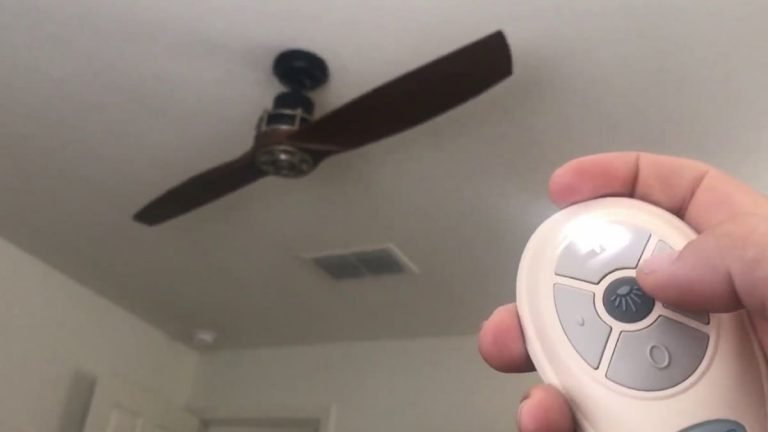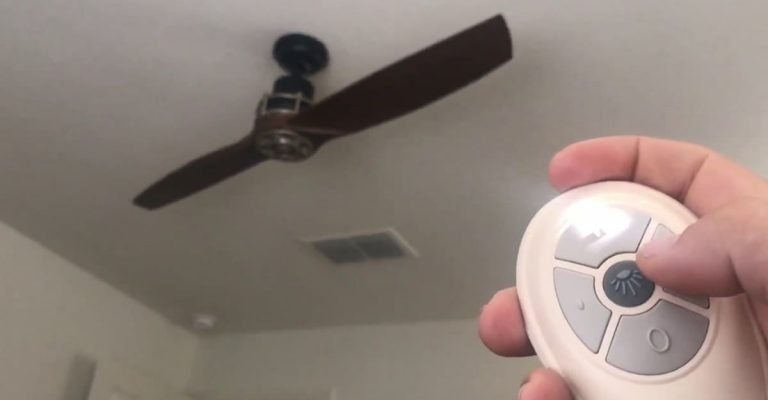
Here’s the thing: Westinghouse ceiling fan remotes aren’t exactly rocket science, but when they stop working or lose their sync, it can easily trip you up. Maybe the lights flicker, the speeds are stuck, or buttons just do nothing. Resetting the remote is usually the answer, but most guides assume you have the manual handy. Don’t worry — you don’t need it. I’ll walk you through how to reset the remote, get everything talking again, and even a few tricks for troubleshooting on your own.
Understanding Your Westinghouse Ceiling Fan Remote
Let’s start simple. Not all remotes are created equal, and Westinghouse mixes things up with different models. Typically, you’ll see remotes with just a few buttons: speed control, a light toggle, maybe a reverse function. They run on batteries (almost always AA or AAA), and they send a radio signal up to the fan’s receiver — the black box tucked inside the fan’s canopy.
If you’re wondering why this matters, here’s why: knowing the basic layout helps you spot what’s “normal” versus what’s broken. For instance, if the light button works but the speed controls don’t, it’s probably not the battery. Or if nothing works, maybe they’ve lost their pairing. Each Westinghouse remote pairs with its fan via special “codes” — usually set by tiny DIP switches inside both the remote and the receiver, or in newer models, using an automatic sync mode.
Honestly, figuring out which remote you have sounds intimidating, but if it’s got simple switches inside, you’re already halfway there. If it looks sealed, it’s probably the newer type and can be reset by button combinations. Either way, you don’t need a manual — just a little patience and a screwdriver.
When and Why to Reset Your Ceiling Fan Remote
You might be wondering, “Not every day do I need to reset my ceiling fan remote. When is it actually necessary?” Great question! Most folks only think about this when something stops working. Maybe the fan speed is stuck, the light doesn’t respond, or, the classic, the remote and fan suddenly ignore each other like moody siblings.
Here’s why a reset can help:
- Interference: Sometimes another wireless device nearby (a neighbor’s fan, a baby monitor, who knows?) messes with your remote’s signal, causing confusion.
- Replaced batteries: Swapping out dead batteries can cause the remote to lose its “handshake” with the fan, especially if you wait too long.
- Moved houses or rooms: If the fan or remote’s been moved, the connection might have gotten scrambled.
- Glitchy behavior: Random issues, like the fan turning on by itself, or lights refusing to cooperate, often mean the code or pairing got mixed up.
Resetting brings the remote and receiver back in sync, like hitting refresh on your phone when it freezes. It’s a simple way to fix most of those classic head-scratchers.
Tools You’ll Need Before Resetting
Here’s what I keep handy when wrangling a stubborn Westinghouse fan remote:
- Small Phillips screwdriver: Needed for opening battery compartments and, sometimes, the fan canopy.
- Fresh batteries: Old batteries can trick you into thinking something’s broken when it just needs more juice.
- Step ladder: If your ceiling fan is out of easy reach, don’t risk a wobbly chair. A good ladder keeps things safe.
- Flashlight: For peeking into dark ceiling canopies or spotting those tiny DIP switches.
You might be tempted to skip the ladder or the flashlight. Trust me, finding those minuscule switches in a dim room, squinting and stretching — not fun. Take an extra minute and grab what you need. Your back (and sanity) will thank you.
Step-By-Step: How to Reset a Westinghouse Ceiling Fan Remote Without a Manual
Let me explain each step slowly. Whether your Westinghouse remote uses DIP switches or pairing buttons, you’ll get there.
For Remotes With DIP Switches
1. Turn off power to your ceiling fan at the wall switch or breaker. Safety first — nobody needs a surprise shock.
2. Open the battery compartment of your remote. Inside, you should see a row of tiny white switches (usually four or five).
3. Next, access the receiver in the fan. This usually means removing the fan’s canopy (the cover at the ceiling), which sometimes just twists off, or may have screws. Use your ladder and flashlight here.
4. Inside the receiver, look for the same row of switches. Make sure both the remote and receiver DIP switches are set to the exact same positions. You can gently tap them with a pen or screwdriver tip to match up.
5. Replace the battery cover, restore power, and test the remote.
For Remotes With Pairing (No DIP Switches)
1. Cut power at the wall switch (or breaker) for about 30 seconds, then turn it back on.
2. Within 30 seconds of restoring power, hold down the “Fan” and “Light” buttons on the remote simultaneously for about 10 seconds (or until you see the light fixture blink or the fan moves).
3. Release the buttons. That usually signals the remote and receiver to “shake hands” and pair up again.
4. Test each button: try changing the speeds, switching the light, or pressing the reverse if available.
If your model uses a different combo of buttons, look for a sticker inside the battery compartment with clues, or try holding the “Stop” button instead.
Most Westinghouse models will accept pairing commands right after power returns, so speed is (sort of) your friend here — don’t wait too long!
Troubleshooting Common Issues After Resetting
Let’s say you’ve followed all the steps, but your fan still isn’t listening. Don’t panic — a few things might be happening.
- Still no response? Double-check those DIP switches. One little switch out of line breaks the whole code.
- Batteries are new, but nothing works? Sometimes, battery contacts get corroded. Rub them gently with a pencil eraser or bit of steel wool.
- Light works, fan doesn’t: The receiver inside the fan might be loose. Try gently wiggling the wires, or re-tighten the canopy screws.
- Fan turns on by itself or acts “haunted”: This can mean another remote nearby, or even a universal remote, is set to the same code. Switch up your DIP settings to something unique.
If you’ve tried everything and your Westinghouse remote absolutely refuses to sync, the receiver might be faulty. In that case, replacements are easy to find online, or you can check if a universal remote kit is compatible — sometimes, that’s actually quicker (and cheaper) than waiting for a specific part.
How DIP Switch Codes Work in Ceiling Fan Remotes
Here’s a fun little deep dive for the curious: DIP switches are like a secret handshake between your remote and your fan. Think of them as a simple “on/off” code that lets the fan know, “Hey, this is my remote!” With four switches, that’s 16 possible codes; with five, it jumps to 32. It’s nothing fancy, but it keeps your neighbor from accidentally controlling your fan.
If you’ve never seen a DIP switch, picture a row of tiny white levers numbered 1–4 (or 1–5). Flipping them up or down changes the code. If your fan and remote don’t match, they’ll never communicate. Setting both to the same pattern — say, “up, down, up, down” — is like sharing the same Wi-Fi password.
If all this talk of “codes” and “sync” feels old-school, it’s because it is. But honestly, it’s reliable and easy to reset — no need for Wi-Fi or fancy apps.
Universal vs. Brand-Specific Westinghouse Remotes: Pros and Cons
You might be weighing your options if your original Westinghouse remote is lost or totally dead. Should you track down the specific brand remote, or grab a universal one from the hardware store or online?
Brand remotes are plug-and-play, with guaranteed pairing, but sometimes harder or pricier to replace. Universal remotes are cheaper and easier to find, but sometimes need trickier setup — different DIP switch codes, or learning modes.
- Universal remotes often require extra steps to pair or even some trial and error with codes.
- Brand remotes tend to offer every function your fan supports, with clear labels.
- Either way, the reset and pair process is usually super similar, so don’t stress if you switch brands.
I’ve seen folks spend hours trying to make a universal remote “find” their fan, only to realize the DIP code needed a tiny tweak. Patience and careful matching are the name of the game.
Tips to Prevent Future Remote Sync Issues
Resetting is one thing, but wouldn’t it be nice not to have to do this so often? A few easy habits can help your Westinghouse ceiling fan remote stay synced for good.
- Change batteries before they’re totally dead. Waiting too long can cause the remote to reset or lose sync.
- Keep a record (on your phone or a sticky note) of your DIP switch code setting. That way, if you ever need to reset again, you’ve got your “secret handshake” written down.
- Avoid stacking multiple remote-controlled fans in the same room with the same code, to save yourself from accidental cross-controls.
- When moving or storing your remote, take out the batteries. This prevents corrosion and weird resets.
A little prep today saves heaps of stress later. Most people only think about this when frustration hits, but trust me — these tricks can save future headaches.
Final Thoughts: Getting You Back In Control
Everyone misplaces manuals, and ceiling fan remotes aren’t exactly intuitive. But resetting a Westinghouse ceiling fan remote, even when you have zero instructions, is absolutely doable. You just need a bit of patience, a screwdriver, and maybe a good flashlight. Whether it’s matching those old-school DIP switches or using a button combo to sync things up, these steps will get you back to breezy comfort in no time.
Don’t let a silent fan or stubborn light ruin your mood — with these tips, you’re more than ready to troubleshoot, reset, and outsmart even the most stubborn Westinghouse remote. Now, go enjoy that cool air again.
